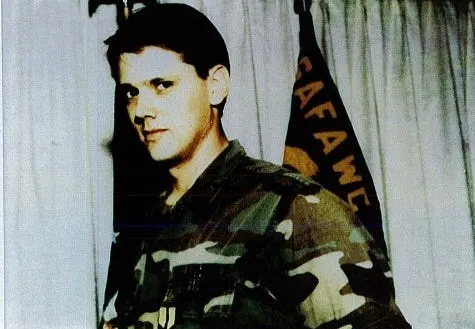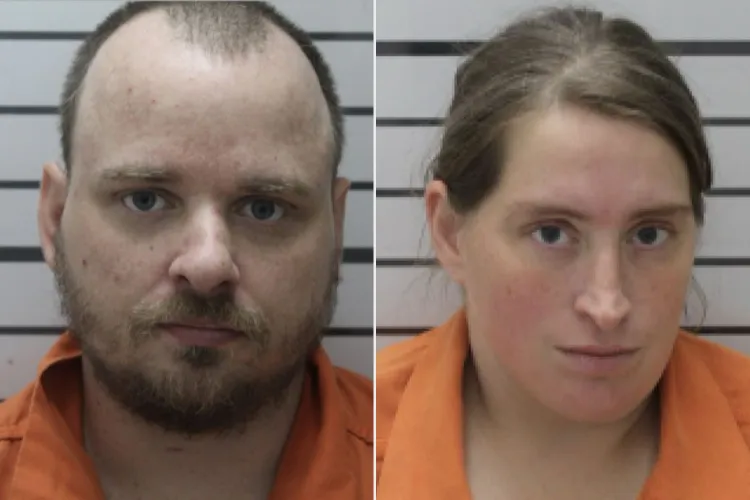A former Air Force sergeant found guilty of a vicious triple murder that shocked the state more than thirty years ago was executed in Florida. It is the ninth execution in Florida this year, which is the most in the state’s recent history.
On Thursday, July 31, Edward Zakrzewski II was executed by lethal injection for the 1994 killings of his wife and two small children in Mary Esther, a seaside community in the Panhandle region of Florida. According to the prosecution, Zakrzewski used a machete to murder his family after learning that his wife was divorcing him.
His victims, Sylvia, 34, Edward Jr., 7, and Anna, 5, were discovered in the family bathtub. The death of Zakrzewski was announced at 6:12 p.m. ET.
In his parting remarks, Zakrzewski remarked, “I want to thank the good people of Sunshine State for killing me in the most cold and calculated, clean, humane, and efficient way possible.” I have absolutely no issues.
Florida has shattered its own records, which were eight executions in 1984 and 2014, and beat all other states with nine this year.
For the first time since 1984, the state may shortly surpass Texas in terms of executions. Governor Ron DeSantis has prioritized the death penalty, saying in May that he wants to bring justice to the families of victims who have been waiting for answers for years or even decades.
According to DeSantis, there are some crimes that are so heinous that the death sentence is the only suitable punishment.
Zakrzewski’s passing represents the 27th execution nationwide in 2025, which is a 10-year high.
What was Edward Zakrzewski s last meal?
Fried pork chops, fried onions, potatoes, bacon, toast, root beer, ice cream, pie, and coffee were Zakrzewski’s choice for his last dinner.
What crime was Zakrzewski convicted of?
Court documents state that on June 9, 1994, Zakrzewski’s son called him at work to inform him that his wife was submitting divorce papers that day. Zakrzewski purchased a machete during his lunch hour, took it home, sharpened it, and hid it with a crowbar.
He asked his kids to watch TV that night. After that, he attacked Sylvia, repeatedly hitting her with the crowbar, covering her head with a plastic bag, and strangling her with a rope.
He then slaughtered each youngster with a machete after calling them one at a time while feigning to wash their teeth. After dragging Sylvia, who was still alive, to the restroom, Zakrzewski struck her head and neck with the machete. All three bodies were left in the tub by him.
After escaping the state, Zakrzewski lived under a false identity for months on Molokai Island in Hawaii. He made friends with a Pentecostal priest who allowed him to live in a shanty in return for doing repairs. On an episode of Unsolved Mysteries, he was identified, blowing his cover and forcing him to turn himself in.
Zakrzewski entered a guilty plea, but his lawyers fought against the death penalty, pointing to his voluntary confession, his excellent service record, and what they called genuine regret.
Judge G. Robert Barron, however, was unconvinced. He underlined how particularly heinous Anna’s murder was, pointing out that she was probably made to watch her brother die and then made to kneel next to the bathtub before being murdered.
During sentencing, Barron stated, “This court could not imagine a more heinous and atrocious way to die.” He concluded that death was the only suitable penalty and described the killings as the result of unquestionably hours and perhaps months of cool, collected thought and deliberate planning.
Who was Edward Zakrzewski II?
According to Kalamazoo Gazette archives, Zakrzewski, one of five brothers, grew up in Michigan before drifting away from his family. He received the Air Force Commendation Medal for Meritorious Service during his time in the military.
Defense lawyer Elton Killam claimed throughout the trial that his client was motivated by a dysfunctional marriage, pointing to claims of Sylvia’s financial irresponsibility, psychological abuse, and adultery. According to an archived Associated Press report, Killam also claimed that Zakrzewski feared his children would face discrimination as they grew up in Korea, Sylvia’s home country, by calling the children in court “half breeds.”
Zakrzewski met Sylvia when stationed in Montana, according to Killam. Later, they relocated to South Korea before settling in Florida. The defense argues that Sylvia spent a lot of money at nightclubs and casinos, had an affair in Korea, miscarried a lover’s child, and accrued enormous costs calling him from the United States.
“Zakrzewski is very remorseful and has become very spiritual over the years,” Lisa Fusaro, his current attorney, told USA TODAY.
According to her, he does yoga and meditation and assists in mentoring other death row inmates. His family and friends, who have been devastated by the issuing of his (death) warrant, have remained in touch with him over the years.
No living relatives of Zakrzewski’s victims could be reached by USA TODAY for comment.
What s happening in Florida?
Nine executions have already taken place in Florida in 2025, and two more are planned for August. As Governor DeSantis continues to sign death warrants, more are anticipated.
This spike adds to the rise in executions around the country. This year has already seen 27 executions of prisoners nationwide, and at least ten more are anticipated, making it the busiest year in more than ten years.
Florida’s dramatic increase in executions, according to Robin Maher, executive director of the Death Penalty Information Center, is the result of an extraordinary expenditure of public funds and resources to implement a law that has never been proven to increase public safety or discourage crime.
She cited research indicating waning national support for the death penalty and said, “Florida is clearly an outlier when compared to the rest of the country in that it enthusiastically uses the death penalty despite rising public concerns, high cost, and low public support.” According to a Gallup poll conducted in 2024, roughly 53% of people supported the death sentence.
With 594 executions since the modern era of the capital penalty began in 1976, Texas continues to be the state with the highest number of executions. Florida comes in second with 115, followed by Oklahoma with 129. With the exception of 1979, 1984, and now 2025, Texas had surpassed or tied Florida’s numbers every year until this year.
Zakrzewski s legal team sought a reprieve
In a last-ditch attempt, Zakrzewski’s attorneys filed an appeal with the Florida Supreme Court, claiming that his 1996 death sentence would not be up to par with contemporary legislation.
His jury at the time divided 6–6 in favor of the death punishment for his daughter and 7–5 in favor of it for the deaths of his wife and son. According to current Florida law, a death recommendation must come from at least eight jurors.
According to what his lawyers wrote, decency standards have changed. But the court rejected the plea, ruling the appeal without merit.












